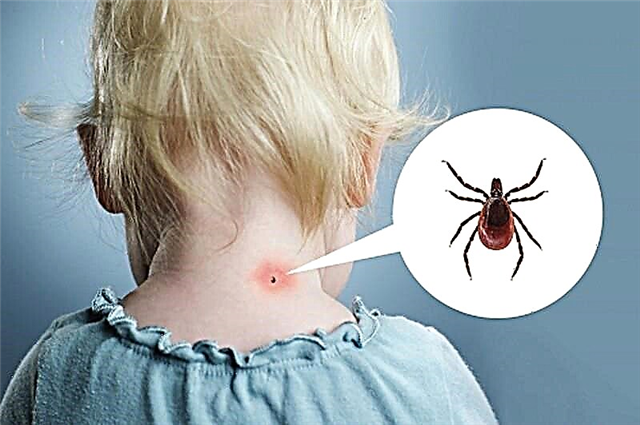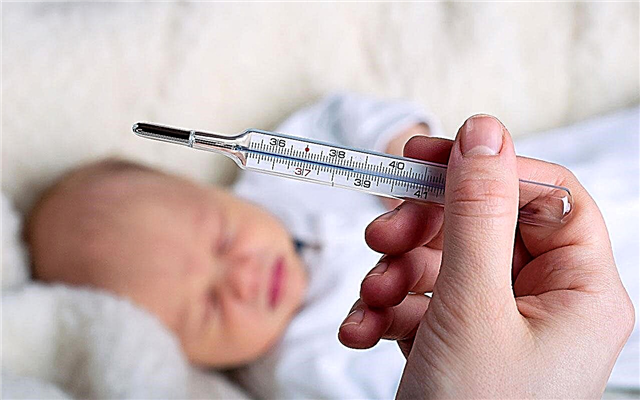
In nine months of pregnancy, your baby goes through a journey that has taken humanity millions of years. His growth in the mother's womb is an accelerated version of human evolution, and it is very interesting to watch how the baby grows. Today, when such examination methods as ultrasound diagnostics have appeared, many aspects of the baby's intrauterine life, previously hidden from the eyes of others, have become obvious, and therefore it has become possible to find out how the size of the fetus changes throughout the gestation period.

How does the child grow?
The growth of the baby begins within 12 hours after conception. For the first 12 hours, the first cell of his body is formed, which will give rise to everything else. It is called a zygote. The maternal and paternal sex cells (egg and sperm) take part in its formation. They merge, exchange genetic information, give off 23 chromosomes, and after 12 hours, just imagine, a completely new organism settles inside a woman.
Already at this stage, the cell contains all the information about the future person - it is known what gender the baby will be born, what eyes and ears he will have, whether he will be tall or short, thick or thin. The cell contains information about what diseases he inherited from his ancestors, where his moles will be located, whether he will have a talent for music, sports, science, what his psychotype will be.
And the first days after conception, the zygote is intensively crushed, without increasing in size. That is, the number of cells within one cell increases, but the total cell size does not. About a week after conception, the baby becomes a blastocyst and attaches to the wall of the uterus, where it will spend the next nine months.

It should be noted that in the first trimester, all embryos grow at approximately the same rate.
During this period, all the forces of a tiny organism are thrown not on growth as such, but on the formation of internal organs. Go embryogenesis processes - the heart, intestines, spine, brain, cerebellum, kidneys, stomach, genitals and so on are laid. From 10 weeks, a baby from an embryo turns into a fetus and is such until the very birth.
After the end of embryogenesis, children grow up in different ways. Each has its own genetic program - some are destined to be tall, and others - small, some will be chubby and others - thin, race, ethnicity, parental genes and partially - the gender of the child are influenced. Therefore, the size of the baby in the first trimester is the most informative in order to establish the exact duration of pregnancy based on them.
From the second trimester, growth and weight gain becomes the main task for the baby in the womb. And the growth rates already indicate how well the baby feels - whether he has enough oxygen, nutrients, is everything good.

Ultrasound standards are fetometry. Fetometric indicators are rather arbitrary, and in each specific case they may differ from the average, and therefore it is not possible to fit all children under one norm. All sizes, which we will talk about below - only averaged, typical of children, according to statistics.
What are the dimensional indicators?
The first size that doctors begin to determine, according to ultrasound diagnostics, is mean inner diameter of the ovum (SVD). After 8 weeks, doctors have a real opportunity to measure the child (embryo) himself, but until this time, the only informative indicator of its growth rate is precisely the distance between the inner wall of the fetal membrane. At the same time, the size of the yolk sac is also recorded.
The next size is coccyx-parietal (CTE). As the name suggests, this is the distance from the bottom of the coccyx to the top of the crown. It is this size that is considered the most important for establishing the exact date of gestation. According to the clinical recommendations of the Ministry of Health, an error of only 3-4 days is considered permissible.
From the 13th week of pregnancy, it begins to be measured biparietal head size (BPD). This is the distance between the inner points of the parietal bones of the skull in the plane. And almost simultaneously with this, it begins to be determined and frontal-occipital size (LZR) - the distance from the frontal bone to the center of the occipital.


And both of these sizes in combination give doctors the opportunity to judge how the child is growing, how normal his development is.
From the end of the first - beginning of the second trimester, the length of paired bones is determined:
- DBK - the length of the femur;
- DG - shin length;
- DPK - the length of the humerus.
This makes it possible to judge not only the proportions, but also to diagnose in time possible malformations in which shortening or deformation of the bones occurs.
From the middle of the second trimester, abdominal diameter is available for measurement... Internal organs are examined at each ultrasound examination, their presence, contours, basic characteristics are recorded, but it is not customary to measure everything, but only those that are important for understanding the rate of development of the child. Measure the size of the cerebellum, sometimes (according to indications) the size of the kidneys. The size of the stomach or urinary bladder of the fetus is not determined. Only if there is a suspicion of malformations of a certain organ, they study it more carefully and try to fix, including its parameters.


Description of weekly changes (with tables)
When we talk about weeks, we are talking about the obstetric period, which begins to be calculated from the first day of the last menstruation. This is how doctors and obstetricians think about pregnancy, it is an international, generally accepted practice. All tables, all norms and examinations are drawn up precisely in obstetric weeks. According to this system, 1 and 2 weeks of pregnancy are the first two weeks of the female cycle before ovulation. That is, the baby does not actually exist yet, and therefore it is impossible to talk about its size.
3 week
It is still impossible to see and measure the baby, since he is busy all week - he moves along the fallopian tube, looks for a place for implantation and by the end of the week is attached to the uterine wall. It is known that the size of the blastocyst at this time does not exceed 0.1-0.2 mm, and ultrasound diagnostic devices that can capture such negligible parameters, most likely, will not appear soon.
4 week
The formation of internal organs begins, and the embryo grows to 0.4-0.6 mm with a weight of about half a gram. The fertilized egg cannot yet be detected in the uterus using ultrasound. The woman has not yet missed her period.

5 week
The delay has begun. Many this week for the first time learn about the existence of crumbs in the womb. And at the crumbs, a tiny heart is already beginning to beat. Height - from 1 to 1.5 mm, weight about a gram. SVD - from 5 to 17 mm.
6 week
Growth can reach 3-4 mm, and weight - one and a half grams. SVD - from 13 to 21 mm. The heartbeat is clearly defined.
7 week
Growth reaches 7 mm. The head becomes big. SVD - 21-24 mm.
The baby develops vision and nerve fibers.
8 week
From this time on, more indicators are measured. The weight of the crumbs is about one and a half grams. The rest of the data is presented in the table:
The kid began to move his head, the cerebellum is forming.

9 week
The baby weighs about 5 grams, but so far the weight is not the main thing.
The rudiments of milk teeth are laid in the baby.
10 week
The crumb already weighs from 5 to 9 grams. The kid officially changes status. He is not an embryo, now he is a fetus. The fetal period of development begins.
The baby begins to distinguish the taste of amniotic fluid, the formation of all internal organs is complete.
11 weeks
The baby weighs from 8 to 15 grams, on average 11-13 grams (an individual development program is already being planned). An intensive mass gain begins.
The kid learned to push off with his legs from an obstacle, he floats in the uterus and turns over after pushing his legs from its walls.

12 weeks
The baby reaches 20-24 grams in weight, but there are also crumbs, the weight of which is only 15-18 grams. And while this is also normal. Other sizes change.
The baby's intestines begin to contract, he drinks water and pees. The external genitals are being formed.
13 weeks
The kid is gaining weight, but he is still very thin and awkward. Now its weight is barely close to 30 grams.
The baby receives primary hearing, after the completion of the formation of the middle ear, he for the first time begins to pick up sounds-vibrations.
14 weeks
The fruit adds up to 40-50 grams in weight. He is already quite like a man.
The baby gets the first reflex smiles, the nervous system develops. This week, the crumbs have their own fingerprints, there are no others in the world.

15 weeks
The weight of some children at this time does not exceed 70 grams, and some are already "stretching" 100 grams.
The sex of the child is perfectly determined by ultrasound, the external genitals are formed.
The brain acquires the first grooves and convolutions, from this moment the child begins to rapidly “grow wiser”.
16 weeks
The weight of children at this time usually already exceeds 100 grams. From this week, the frontal-occipital head size begins to be determined.
The baby began to develop its own hemoglobin, he can spit and hiccup, the formation of all the muscles of the body has completed. They all work.
17 weeks
Weight exceeds 150 grams, there is an active accumulation of subcutaneous adipose tissue.
The child receives a full-fledged high-frequency hearing, he has an instinct for self-preservation - in response to loud and harsh sounds, he reacts with increased motor activity and increased heart rate.

18 weeks
The baby's weight reaches 200 grams, maybe more. All dimensions in the table are in millimeters, excluding height. He is in centimeters.
The process of hardening and mineralization of bones is almost complete, the length of the legs for the first time in the entire life of the baby in the womb exceeded the length of the arms. Now he became even more human.
19 weeks
The child weighs about 250 grams. Growth rates are slowing down, but weight gain is increasing.
Hearing is improving, a mother with such a child's size can begin to feel his first movements.
20 weeks
The range of weight norms is becoming wider - babies weigh from 280 to 370 grams at this gestational age.
The child tries to open his eyes, but so far it almost does not work, but it is great to suck his own finger. Right-handers prefer the right, and left-handers prefer the left. The differentiation of the cerebral hemispheres is complete.

21 week
Weight - from 360 to 480 grams (this figure becomes very individual). The second half of pregnancy begins.
The kid begins to distinguish between darkness and light, day and night, he develops his own certain daily routine.
22 weeks
Most boys and girls weigh over 450 grams.
The fetus is considered completely viable from this week, and if childbirth now occurs, it will be considered a premature birth, and not a miscarriage. Neonatologists will fight for the baby's life.
The baby has quite noticeable cheeks.
23 weeks
The weight is over 500 grams. But this is average. There are both larger and smaller kids.
Numerous folds on the skin begin to smooth out gradually, the formation of the spine is completed, and the maturation of lung tissue has begun. Alveoli form, and the first amounts of surfactant begin to be produced - a substance that will help the baby breathe on its own after birth.

24 weeks
Weight ranges from 600 to 800 grams.
Lanugo hair begins to fall out on the baby's body. By birth, they should fall out completely. But if a little hairline remains, it's okay - it will fall out after birth.
25 weeks
Fruit weight - from 700 to 900 grams. And there are still no big differences between boys and girls in weight.
The baby sees dreams, he actively trains all the reflexes that he needs to survive after birth.
26 weeks
The child's weight is from 800 grams to a kilogram. And this is his first personal best.
The baby begins to produce growth hormones, most babies take in the uterus the position in which they will remain until the very birth - head down.

27 weeks
The last, third trimester of pregnancy begins. Child's weight from 1.1 to 1.2 kilograms, but there are quite a few babies who have not yet "reached" the kilogram.
Having lost the ability to fit in the mother's womb in full growth, the child takes a flexion position - now he will have to be in it before giving birth. This complicates the diagnosis of sex - the external genital organs are closed, and if the sex was not found out earlier, now the probability of an erroneous determination is significantly higher.
28 weeks
The baby's weight is from 1.1 to 1.4 kilograms. Mom is getting harder. Boys now weigh 100 grams more than girls - such a pattern exists.
The perinatal period of pregnancy begins. The child is quite viable. If he is born, he will survive with a 90% probability.
29 weeks
The weight of children at this time is in the range from 1.2 kg to 1.5 kg.
The formation of the brain is completed. The kid has mastered several dozen reflex skills, and this increases his vitality.
Thanks to modern medical advances, up to 96% of children born in this period survive.

30 weeks
Weight - from 1.4 to 1.7 kg.
The baby begins to produce melanin. Natural brunettes begin to darken, as it is intended for them by nature, and the skin becomes darker.
31 weeks
Most children weigh more than 1.5 kilograms. There are also "heroes" who already weigh 1.8 kilograms.
In children, ears cease to stick out funny in different directions. The cartilage begins to harden, and the ears stick to the head.
32 weeks
There are children weighing from 1.7 kg, and there are already babies weighing more than 2 kg.
Large-scale preparation for childbirth begins in the organisms of the woman and the fetus. Oxytocin is produced, the pelvic floor ligaments soften.

33 weeks
Babies weigh more than 1.8 kg this week in most cases.
The kid actively trains facial muscles - makes faces and grimaces, smiles and yawns. It is no longer possible to fully measure his height on an ultrasound scan, he is too large. From this time on, conclusions are made about the growth according to special formulas, into which the parameters of individual parts of the body are entered.
34 weeks
Weight - from 2.0 to 2.3 kg.
The aging process of the placenta begins, but with a normal pregnancy, this should not scare you at all - all processes are compensated, the baby will not experience any inconvenience.
35 weeks
The weight of children is different - from 2 kilograms to 2.5 kilograms.
The iris of dark-eyed children becomes dark, previously all babies had a sky-blue iris color. Childbirth is still considered premature, but the prognosis in case of birth is very favorable.

36 weeks
Weight - from 2.3 to 2.8 kg. Mom goes to the "home stretch" - the last month of pregnancy begins.
On the baby's fingers, for the first time in his intrauterine history, the nail plates begin to protrude beyond the phalanges.
37 weeks
The normal weight range is very wide - from 2.5 to 3 kilograms.
The process of maturation of lung tissue is almost over.
This week is the last week that labor is considered premature.
38 weeks
The child's weight is from 2.9 to 3.6 kilograms.
From this week, childbirth is considered urgent, and the baby is fully full-term.

39 weeks
The child's weight is from 3.2 to 3.7 kg.
The baby is ready for birth.
40 weeks
Weight - from 3 to 4 kilograms.
With these parameters, the baby will be born.If it doesn't happen this week, there is still time - pregnancy up to 42 weeks inclusive is not considered post-term.
During these two weeks, the baby will continue to gain weight, but only slightly, the growth rate of the head and limbs will also slow down. This is a defense mechanism, because it is always more difficult to be born large.





